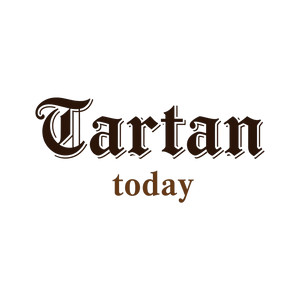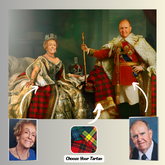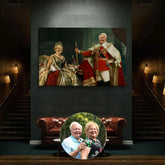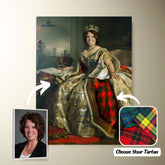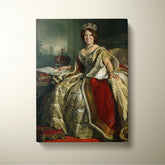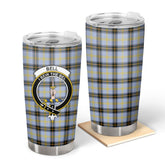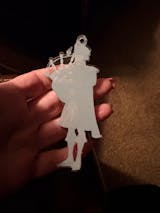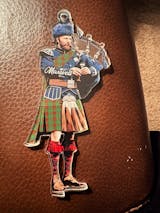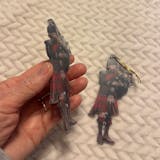-
Personalized Clan Bell of the Borders Tartan Bagpipe Ornament with Custom Name – Scottish Christmas Tree Decoration KM40
Personalized Clan Bell of the Borders Tartan Bagpipe Ornament with Custom Name – Scottish Christmas Tree Decoration KM40Celebrate your Scottish heritage with this unique wood & acrylic tartan ornament. Perfect as a personalized Christmas decoration or a meaningful gift for friends and relatives on...- From $19.99 USD
$25.99 USD- From $19.99 USD
- Unit price
- per
Save $6.00 -
Clan Bell Family Tartan 2D T-shirt FO96 - Black
Bell Family Tartan Clan 2D T-shirt FO96 Product detail: This new 2D t-shirt features a relaxed fit for Men and Women, durable, breathable and soft Made from 100% cotton The High-resolution graphic artwork is printed on the entire shirt. Machine wash cold. The print...- $29.25 USD
- $29.25 USD
- Unit price
- per
-
Black
-
White
-
Navy
-
Storm Grey
-
Personalized Clan Bell of the Borders Tartan Bagpipe Ornament with Custom Name – Scottish Christmas Tree Decoration QH38
Personalized Clan Bell of the Borders Tartan Bagpipe Ornament with Custom Name – Scottish Christmas Tree Decoration QH38Celebrate your Scottish heritage with this unique wood & acrylic tartan ornament. Perfect as a personalized Christmas decoration or a meaningful gift for friends and relatives on...- From $19.99 USD
$25.99 USD- From $19.99 USD
- Unit price
- per
Save $6.00 -
Clan Bell of the Borders Tartan Crest Star Ceramic Ornament DZ14 - Bell of the Borders Tartan
Clan Bell of the Borders Tartan Crest Star Ceramic Ornament DZ14 One of the best things about Christmas is that it gives you an excuse to dress up your home with all of the lovely ornaments we associate with the holiday season. With so...- From $19.25 USD
- From $19.25 USD
- Unit price
- per
-
Bell of the Borders Tartan
-
Clan Bell of the Borders Tartan Crest Tumbler TB97 - Bell of the Borders Tartan Clan
Bell of the Borders Tartan Clan Crest Tumbler TB97 Product Detail: Bell of the Borders Tartan Crest Tumbler Introducing our Tartan Tumbler, a perfect companion for your daily hydration needs. This mobile tumbler comes with a slide lid and an ideal size, providing convenience...- From $45.99 USD
- From $45.99 USD
- Unit price
- per
-
Bell of the Borders Tartan Clan
-
Clan Bell of the Borders Tartan Crest Blanket Wave Style IZ23 - Bell of the Borders Tartan Clan
Bell of the Borders Tartan Clan Crest Blanket Wave Style IZ23 Product Detail: Each blanket features a premium suede polyester print for beautiful color vibrancy. Cozy underside is constructed from an ultra-soft micro fleece fabric to keep you warm and comfortable. Perfect for snuggling...- $65.02 USD
- $65.02 USD
- Unit price
- per
-
Bell of the Borders Tartan Clan
-
Personalized Clan Bell of the Borders Tartan Drummer Ornament with Custom Name – Scottish Christmas Tree Decoration TA26
Personalized Clan Bell of the Borders Tartan Drummer Ornament with Custom Name – Scottish Christmas Tree Decoration TA26Celebrate your Scottish heritage with this unique wood & acrylic tartan ornament. Perfect as a personalized Christmas decoration or a meaningful gift for friends and relatives on...- From $19.99 USD
$25.99 USD- From $19.99 USD
- Unit price
- per
Save $6.00 -
Personalized Clan Tokyo Bluebells Dance Modern Tartan Bagpipe Ornament with Custom Name – Scottish Christmas Tree Decoration NM73
Personalized Clan Tokyo Bluebells Dance Modern Tartan Bagpipe Ornament with Custom Name – Scottish Christmas Tree Decoration NM73Celebrate your Scottish heritage with this unique wood & acrylic tartan ornament. Perfect as a personalized Christmas decoration or a meaningful gift for friends and relatives on...- From $19.99 USD
$25.99 USD- From $19.99 USD
- Unit price
- per
Save $6.00 -
Personalized Clan Jacobite Rebellion Modern Tartan Bagpipe Ornament with Custom Name – Scottish Christmas Tree Decoration TA20
Personalized Clan Jacobite Rebellion Modern Tartan Bagpipe Ornament with Custom Name – Scottish Christmas Tree Decoration TA20Celebrate your Scottish heritage with this unique wood & acrylic tartan ornament. Perfect as a personalized Christmas decoration or a meaningful gift for friends and relatives on special...- From $19.99 USD
$25.99 USD- From $19.99 USD
- Unit price
- per
Save $6.00 -
Personalized Clan Bellspool Modern Tartan Bagpipe Ornament with Custom Name – Scottish Christmas Tree Decoration FU73
Personalized Clan Bellspool Modern Tartan Bagpipe Ornament with Custom Name – Scottish Christmas Tree Decoration FU73Celebrate your Scottish heritage with this unique wood & acrylic tartan ornament. Perfect as a personalized Christmas decoration or a meaningful gift for friends and relatives on special occasions...- From $19.99 USD
$25.99 USD- From $19.99 USD
- Unit price
- per
Save $6.00 -
Personalized Clan Bell, R (Personal) Reproduction Tartan Bagpipe Ornament with Custom Name – Scottish Christmas Tree Decoration SY95
Personalized Clan Bell, R (Personal) Reproduction Tartan Bagpipe Ornament with Custom Name – Scottish Christmas Tree Decoration SY95Celebrate your Scottish heritage with this unique wood & acrylic tartan ornament. Perfect as a personalized Christmas decoration or a meaningful gift for friends and relatives on...- From $19.99 USD
$25.99 USD- From $19.99 USD
- Unit price
- per
Save $6.00 -
Personalized Clan Bell, R (Personal) Modern Tartan Bagpipe Ornament with Custom Name – Scottish Christmas Tree Decoration XT49
Personalized Clan Bell, R (Personal) Modern Tartan Bagpipe Ornament with Custom Name – Scottish Christmas Tree Decoration XT49Celebrate your Scottish heritage with this unique wood & acrylic tartan ornament. Perfect as a personalized Christmas decoration or a meaningful gift for friends and relatives on...- From $19.99 USD
$25.99 USD- From $19.99 USD
- Unit price
- per
Save $6.00 -
Personalized Clan Bell, R (Personal) Ancient Tartan Bagpipe Ornament with Custom Name – Scottish Christmas Tree Decoration FM48
Personalized Clan Bell, R (Personal) Ancient Tartan Bagpipe Ornament with Custom Name – Scottish Christmas Tree Decoration FM48Celebrate your Scottish heritage with this unique wood & acrylic tartan ornament. Perfect as a personalized Christmas decoration or a meaningful gift for friends and relatives on...- From $19.99 USD
$25.99 USD- From $19.99 USD
- Unit price
- per
Save $6.00 -
Personalized Clan Bell of the Borders Reproduction Tartan Bagpipe Ornament with Custom Name – Scottish Christmas Tree Decoration UJ77
Personalized Clan Bell of the Borders Reproduction Tartan Bagpipe Ornament with Custom Name – Scottish Christmas Tree Decoration UJ77Celebrate your Scottish heritage with this unique wood & acrylic tartan ornament. Perfect as a personalized Christmas decoration or a meaningful gift for friends and relatives...- From $19.99 USD
$25.99 USD- From $19.99 USD
- Unit price
- per
Save $6.00 -
Personalized Clan Bell of the Borders Modern Tartan Bagpipe Ornament with Custom Name – Scottish Christmas Tree Decoration KI49
Personalized Clan Bell of the Borders Modern Tartan Bagpipe Ornament with Custom Name – Scottish Christmas Tree Decoration KI49Celebrate your Scottish heritage with this unique wood & acrylic tartan ornament. Perfect as a personalized Christmas decoration or a meaningful gift for friends and relatives...- From $19.99 USD
$25.99 USD- From $19.99 USD
- Unit price
- per
Save $6.00 -
Personalized Clan Bell of the Borders Ancient Tartan Bagpipe Ornament with Custom Name – Scottish Christmas Tree Decoration XF61
Personalized Clan Bell of the Borders Ancient Tartan Bagpipe Ornament with Custom Name – Scottish Christmas Tree Decoration XF61Celebrate your Scottish heritage with this unique wood & acrylic tartan ornament. Perfect as a personalized Christmas decoration or a meaningful gift for friends and relatives...- From $19.99 USD
$25.99 USD- From $19.99 USD
- Unit price
- per
Save $6.00 -
Personalized Clan Bell Border Reproduction Tartan Bagpipe Ornament with Custom Name – Scottish Christmas Tree Decoration QN12
Personalized Clan Bell Border Reproduction Tartan Bagpipe Ornament with Custom Name – Scottish Christmas Tree Decoration QN12Celebrate your Scottish heritage with this unique wood & acrylic tartan ornament. Perfect as a personalized Christmas decoration or a meaningful gift for friends and relatives on special...- From $19.99 USD
$25.99 USD- From $19.99 USD
- Unit price
- per
Save $6.00 -
Personalized Clan Bell Border Modern Tartan Bagpipe Ornament with Custom Name – Scottish Christmas Tree Decoration TZ46
Personalized Clan Bell Border Modern Tartan Bagpipe Ornament with Custom Name – Scottish Christmas Tree Decoration TZ46Celebrate your Scottish heritage with this unique wood & acrylic tartan ornament. Perfect as a personalized Christmas decoration or a meaningful gift for friends and relatives on special...- From $19.99 USD
$25.99 USD- From $19.99 USD
- Unit price
- per
Save $6.00 -
Personalized Clan Bell Border Ancient Tartan Bagpipe Ornament with Custom Name – Scottish Christmas Tree Decoration CD30
Personalized Clan Bell Border Ancient Tartan Bagpipe Ornament with Custom Name – Scottish Christmas Tree Decoration CD30Celebrate your Scottish heritage with this unique wood & acrylic tartan ornament. Perfect as a personalized Christmas decoration or a meaningful gift for friends and relatives on special...- From $19.99 USD
$25.99 USD- From $19.99 USD
- Unit price
- per
Save $6.00 -
Personalized Clan Bell (Personal) Reproduction Tartan Bagpipe Ornament with Custom Name – Scottish Christmas Tree Decoration BO33
Personalized Clan Bell (Personal) Reproduction Tartan Bagpipe Ornament with Custom Name – Scottish Christmas Tree Decoration BO33Celebrate your Scottish heritage with this unique wood & acrylic tartan ornament. Perfect as a personalized Christmas decoration or a meaningful gift for friends and relatives on special...- From $19.99 USD
$25.99 USD- From $19.99 USD
- Unit price
- per
Save $6.00
Ex: Your Tartan + Product
Popular Products
Turn Me Royal Personalized Portrait from Your Photo, Custom Tartan. Custom Canvas Wall Art as Gift for Men
- From $32.45 USD
- From $32.45 USD
- Unit price
- / per
Royalty Couple Personalized Portrait from Your Photo, Custom Tartan. Custom Canvas Wall Art
- From $47.45 USD
- From $47.45 USD
- Unit price
- / per
The Queen Personalized Portrait from Your Photo, Custom Tartan. Custom Canvas Wall Art as Gift for Women
- From $32.45 USD
- From $32.45 USD
- Unit price
- / per
Which Clan Are You From?
- Apron
- Bell
- Bell (Personal) Ancient
- Bell (Personal) Modern
- Bell (Personal) Reproduction
- Bell Border (Bell Southern Bell) Ancient
- Bell Border (Bell Southern Bell) Modern
- Bell Border (Bell Southern Bell) Weathered
- Bell Border Ancient
- Bell Border Modern
- Bell Border Reproduction
- Bell clanBell tartanPillow Cover
- Bell of the Borders
- Bell of the Borders Ancient
- Bell of the Borders Gnome
- Bell of the Borders Modern
- Bell of the Borders Reproduction
- Bell of the Borders Tartan
- Bell of the Borders Weathered
- Bell Tartan
- Bellew
- Bellingham
- Bellspool Modern
- Jacobite Rebellion Modern
- R (Personal) Ancient
- R (Personal) Modern
- R (Personal) Reproduction
- Scott
- Tokyo Bluebells Dance Modern
List Of Tartan
-
Clan A
- Abercrombie Tartan
- Aberdeen Tartan
- Abernethy Tartan
- Adair Tartan
- Adam Tartan
- Ayrshire Tartan
- Agnew Tartan
- Aikenhead Tartan
- Ainslie Tartan
- Aiton Tartan
- Allan Tartan
- Alexander Tartan
- Allardice Tartan
- Allison Tartan
- Anderson Tartan
- Angus Tartan
- Anstruther Tartan
- Arbuthnot Tartan
- Armstrong Tartan
- Arnott Tartan
- Auchinleck Tartan
- Ayrshire Tartan
-
Clan B
- Baillie Tartan
- Bain Tartan
- Baird Tartan
- Balfour Tartan
- Bannatyne Tartan
- Bannerman Tartan
- Barclay Tartan
- Baxter Tartan
- Beaton Tartan
- Bell Tartan
- Belshes Tartan
- Bethune Tartan
- Beveridge Tartan
- Binning Tartan
- Bisset Tartan
- Blackadder Tartan
- Blackstock Tartan
- Black Watch Tartan
- Blair Tartan
- Blane Tartan
- Blyth Tartan
- Borthwick Tartan
- Boswell Tartan
- Bowie Tartan
- Boyd Tartan
- Boyle Tartan
- Brisbane Tartan
- Brodie Tartan
- Brown/ Broun Tartan
- Bruce Tartan
- Buccleuch Tartan
- Buchan Tartan
- Buchanan Tartan
- Burnett Tartan
- Burns Tartan
- Butter Tartan
- Byres Tartan
-
Clan C
- Cairns Tartan
- Calder Tartan
- Callander Tartan
- Cameron Tartan
- Campbell Tartan
- Campbell of Breadalbane Tartan
- Campbell of Cawdor Tartan
- Carmichael Tartan
- Carnegie Tartan
- Carruthers Tartan
- Cathcart Tartan
- Chalmers Tartan
- Charteris Tartan
- Chattan Tartan
- Cheyne Tartan
- Chisholm Tartan
- Christie Tartan
- Clark Tartan
- Clelland Tartan
- Clephan Tartan
- Clergy Tartan
- Cochrane Tartan
- Cockburn Tartan
- Colquhoun Tartan
- Colville Tartan
- Cooper Tartan
- Couper Tartan
- Craig Tartan
- Cranstoun Tartan
- Crawford Tartan
- Crichton Tartan
- Crief District Tartan
- Crosbie Tartan
- Cumming Tartan
- Cunningham Tartan
- Currie Tartan
- Clan D
- Clan E
- Clan F
- Clan G
- Clan H
- Clan I
- Clan J
- Clan K
- Clan L
-
Clan M
- Maitland Tartan
- Malcolm Tartan
- Mar Tartan
- Marjoribanks Tartan
- Maxtone Tartan
- Matheson Tartan
- Maule Tartan
- Maxwell Tartan
- Meldrum Tartan
- Melville Tartan
- Menzies Tartan
- Mercer Tartan
- Middleton Tartan
- Moffat Tartan
- Moncrieffe Tartan
- Montgomery Tartan
- Monypenny Tartan
- Moncreiffe Tartan
- Monteith Tartan
- Morrison Tartan
- Mouat Tartan
- Moubray Tartan
- Mow Tartan
- Muir_More Tartan
- Muirhead Tartan
- Munro Tartan
- Murray Tartan
- Murray of Atholl Tartan
-
Clan Mc/Mac
- MacAlister Tartan
- MacArthur Tartan
- MacAlpine Tartan
- MacAulay Tartan
- MacBain Tartan
- MacBean Tartan
- MacBeth Tartan
- MacCallum Tartan
- MacCraig Tartan
- MacColl Tartan
- MacCorquodale Tartan
- MacDiarmid Tartan
- MacDonald Tartan
- MacDonald of Clanranald Tartan
- MacDonald of Sleat Tartan
- MacDonnell of Glengarry Tartan
- MacDonnell of Keppoch Tartan
- MacDougall Tartan
- MacDowall Tartan
- MacDuff Tartan
- MacEwen_MacEwan Tartan
- MacEdward Tartan
- MacFarlane Tartan
- MacGill Tartan
- MacGillivray Tartan
- MacGregor Tartan
- MacGowan (McGowan) Tartan
- MacHardy Tartan
- MacIan Tartan
- MacInnes Tartan
- MacIntyre Tartan
- MacKay Tartan
- MacKillop Tartan
- MacKellar Tartan
- Mackinlay Tartan
- MacKenzie Tartan
- Mackie Tartan
- MacKinnon Tartan
- MacKintosh / MacIntosh Tartan
- MacLeod Tartan
- MacMillan Tartan
- MacNab Tartan
- MacNaughton Tartan
- MacNeil / MacNeill Tartan
- MacNeil of Colonsay Tartan
- MacNicol Tartan
- MacPhail Tartan
- MacPhee_MacFie Tartan
- MacPherson Tartan
- MacQuarrie Tartan
- MacQueen Tartan
- MacRae Tartan
- MacRow Tartan
- MacSporran Tartan
- MacTaggart Tartan
- MacTavish Tartan
- MacThomas Tartan
- McCorquodale Tartan
- McCulloch Tartan
- McFadzen Tartan
- McGeachie Tartan
- McIver Tartan
- McKerrell Tartan
- Clan N
- Clan O
- Clan P
- Clan R
-
Clan S
- Sandilands Tartan
- Scott Tartan
- Scrymgeour Tartan
- Selkirk Tartan
- Sempill Tartan
- Seton Tartan
- Shaw Tartan
- Shepherd Tartan
- Sinclair Tartan
- Skene Tartan
- Skirving Tartan
- Smith Tartan
- Somerville Tartan
- Spalding Tartan
- Spens Tartan
- Spottiswood Tartan
- Stevenson Tartan
- Stewart Tartan
- Stewart of Appin Tartan
- Stirling Tartan
- Strachan Tartan
- Straiton Tartan
- Strange Tartan
- Strathclyde District Tartan
- Stuart of Bute Tartan
- Sutherland Tartan
- Swinton Tartan
- Clan T
- Clan U W Y
- Request Your Clan
Clan Bell (Bell Tartan)
1. About Clan Bell (Bell Tartan)
Crest: A hand holding a dagger, paleways, Proper
Motto: I Beir the Bel
Historic Seat: Middlebie, Dumfires & Galloway
Clan Chief: None, armigerous clan
2. Clan Bell History (Bell Tartan)
Families with this name are almost exclusively found in the Borders, particularly Dumfriesshire, and the name bell may have French origins (Bel or Belle).
Several different spellings of the name have been noted, including Bel, Bellis, Belle, Beal, and Bale.
Around the eleventh century, the Bells established in Middlebie Parish in Dumfriesshire, and by the seventeenth century, there were 31 families residing there.
One of the oldest mentions is to Gilbert Le Fitzbel, who had land in Dumfries. It is thought that they are descended from a Norman David I supporter.
The Bells turned to traveling to make a living at this time, like many other families in the Borders.
The activities of the ruling families had grown problematic during the 15th and 16th centuries as a result of the overpopulation in the area, and many of them had received letters of caution from the Crown in 1517 to maintain peace.
The Act of 1587, which was established "for the quieting and keeping in obedience of the disorderit and subjectis inhabitants of the Borders, Highlands, and Isles," suggests that things did not significantly improve.
Thereafter, a list of clans "that hes Captaines and Chieftaines" is given, which the Bells are among. Numerous families moved to the Ulster Plantation in the early 17th century, and the surname Bell is still used in Ireland today.
After William Bell received holdings at Kirkconnel in Annandale in 1424 from Archibald, Earl of Douglas, the Bells became strong associates of the Douglases. There, William erected a fortified tower bearing the current Bell clan crest.
William Bell, sometimes known as Redcloak, was the clan's final chief until his death in 1628. Blackethouse in Annandale was once his home, but it was destroyed by an English attack in 1547.
As a result, William moved to another residence close to Kelso while keeping the Blackethouse name. The clan has been recognized by the Lord Lyon after nearly 400 years of slumber, and it has been given authority to find a new Chief.
The family moved to numerous locations after the 17th century, including America, Europe, Australia, and New Zealand.
There is a Bell Sept of the MacMillan clan that is distinct from the Border Bells. Their original home was in Glen Shira, close to Loch Fyne's head.
One Bell served as a Surgeon Extraordinary to the Sovereign, two Bells served as presidents of the Royal College of Surgeons, some Bells became sheriffs, and many Bells were men and women of letters.
General Sir John Bell, a soldier in the Napoleonic Wars and a close friend of the Duke of Wellington, George Joseph Bell, a well-known lawyer who wrote "Principles of the Law of Scotland," Dr. Joseph Bell, a renowned surgeon who served as the model for the fictional detective Sherlock Holmes, and last but not least, Alexander Graham Bell, who is credited with creating the first usable telephone, are all well-known Bells.
3. Clan Bell Tartans
Col. Bell kept the Bell of the Borders tartan secret for a while before permitting it to be revealed. The color stands for
Black is for the Border and in honor of our fallen soldiers.
The oceans and skies above us as we fled are both blue.
Green represents the color of the border and the promise of nature's plan.
Red symbolizes our sacrificed blood, courage, and tribe.
The sunburst color is yellow.
Y/6 LB8 Y/8 LB76 K8 LB8 K32 G8 R/12 Threadcount
Bell of the Borders
4. Clan Bell Crest & Coats of Arms
4.1 Clan Bell Crest
Worn by all of the name and ancestry
Crest Description:
A hand holding a dagger, paleways, Proper
4.2 Clan Bell Coat of Arms
Note on Coats of Arms: A coat of arms is given to an individual under Scottish heraldic law (with the exception of civic or corporate arms). A 'family coat of arms' does not exist.
With the exclusions listed above, the weapons depicted below are personal weapons. The only person authorized to use these weapons is the grantee.
BELL of Blackethouse
Azure, three bells, Or
An Elizabethan oak over-mantel carved with the coat of arms of Sir Robert Bell
5. Clan Bell Places & People
5.1 Clan Bell Places
The Bell Clan's ancestral home. A destroyed tower in Middlebie parish, Dumfriesshire, with the year 1404 and the initials W[illiam] B[ell] above its exterior doorway is known as Blacket-House, sometimes known as Blackwood House.
Bell is alleged to have killed "fair Helen of Kirkconnel Lea" at his residence.
According to historical documents, John Bell of Blackwoodhouse settled close to Middlebie at some point in the 15th century.
The Tower is believed to have been built in the second part of the sixteenth century.
5.2 Clan Bell People
Alexander Graham Bell
Bell, who was born on March 3, 1847, in Edinburgh, is most remembered for creating the telephone, but he was also a wonderful man and a great inventor who developed a number of other innovations, including an air-cooling system, a method of desalinating sea water, and a sorting device for punch-coded census cards.
In order to teach communication to the deaf, his father, Alexander Melville Bell, created Visible communication. Alexander continued this work and instructed the young Helen Keller.
Bell improved on previous innovations to the traditional telegraph, the "harmonic telegraph," which could send many messages at once over a single telegraph cable.
Many other innovators had been working on the idea of sending human speech via wire. Bell came to the conclusion that an adaption of this concept might allow for the capture of all human voice sounds.
His telephone was granted a patent on March 7, 1876, and the first audible speech transmission occurred in 1875.
- Choosing a selection results in a full page refresh.
